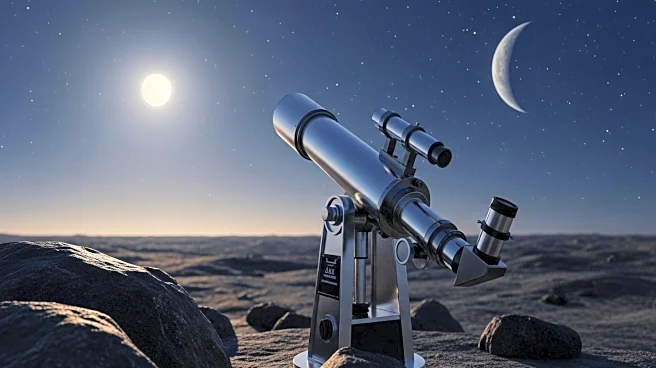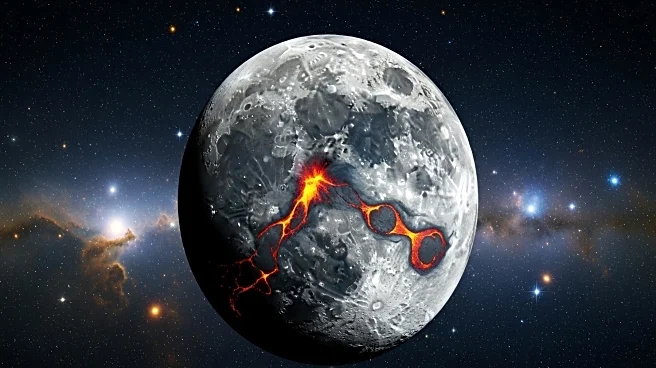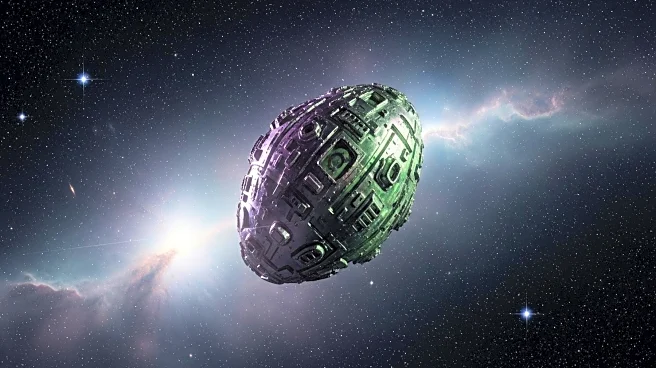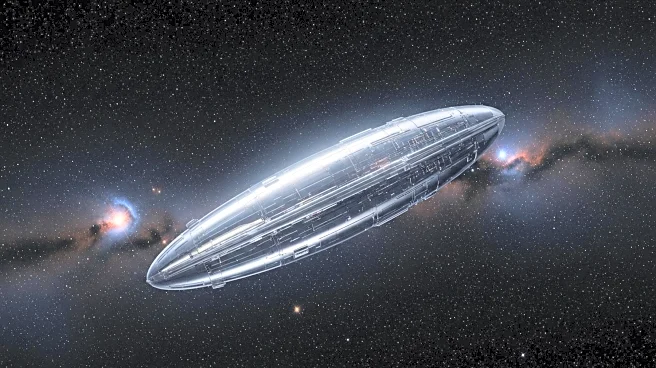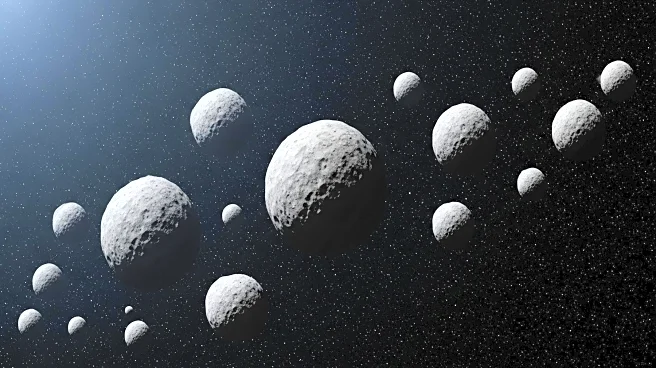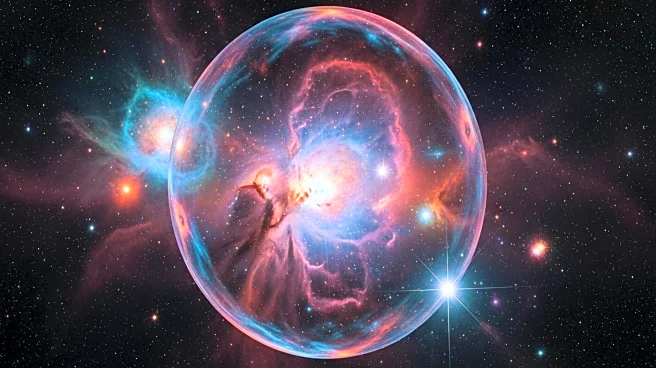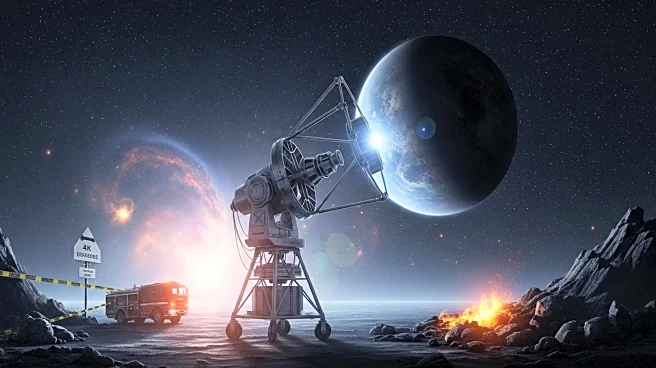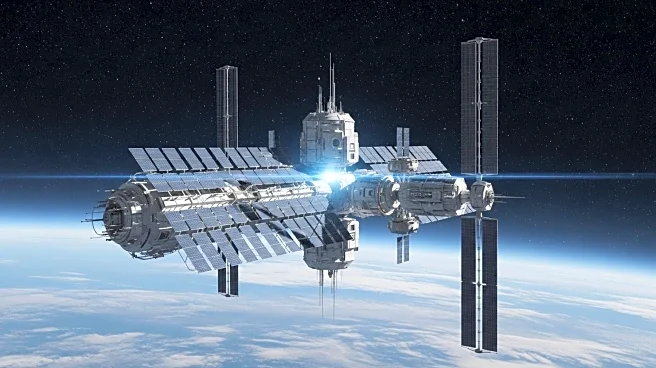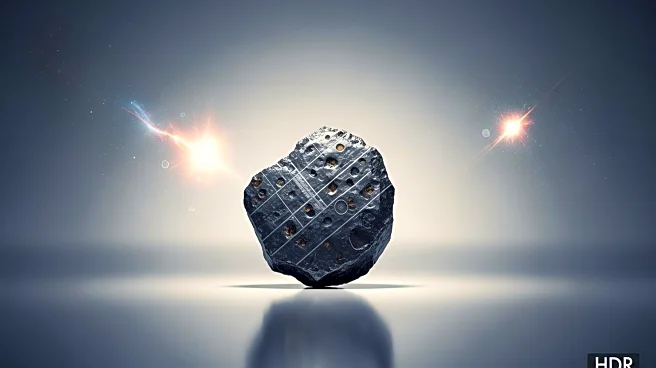What's Happening?
Recent studies have identified a cluster of asteroids near Venus, known as coorbitals, which could pose a threat to Earth. These asteroids share an orbital path with Venus but follow different trajectories, making them difficult to track due to their elongated orbits. With at least 20 identified, scientists are concerned there may be more. The chaotic nature of their orbits complicates long-term predictions, with potential threats becoming unpredictable beyond 150 years. Researchers are advocating for increased vigilance and propose deploying a telescope near Venus to improve monitoring of these celestial bodies.
Why It's Important?
The discovery of coorbital asteroids near Venus highlights the need for enhanced monitoring of celestial bodies that could pose a threat to Earth. These asteroids, with eccentric orbits, are challenging to observe and predict, raising concerns about potential collisions. The possibility of some asteroids being 'city killers,' capable of devastating populated areas, underscores the importance of developing advanced surveillance techniques. Understanding the dynamics of these asteroids is crucial for planetary defense strategies and ensuring the safety of Earth from cosmic threats.
What's Next?
Scientists are considering deploying a telescope near Venus to monitor these asteroids more closely. Such a mission could provide valuable data on the dynamics of coorbital asteroids and their potential risks. Continued research and simulations are necessary to assess the threat level and develop effective monitoring strategies. As the study of these asteroids progresses, collaboration among international space agencies may be required to address the challenges posed by these celestial bodies.
Beyond the Headlines
The presence of coorbital asteroids near Venus raises questions about the hidden threats within our solar system. The complexity of their orbits and the difficulty in tracking them highlight the limitations of current observation methods. This discovery prompts a reevaluation of how we monitor and respond to potential cosmic threats, emphasizing the need for innovative approaches in planetary defense. The study of these asteroids also contributes to our understanding of the dynamic nature of celestial bodies and their interactions with planets.

